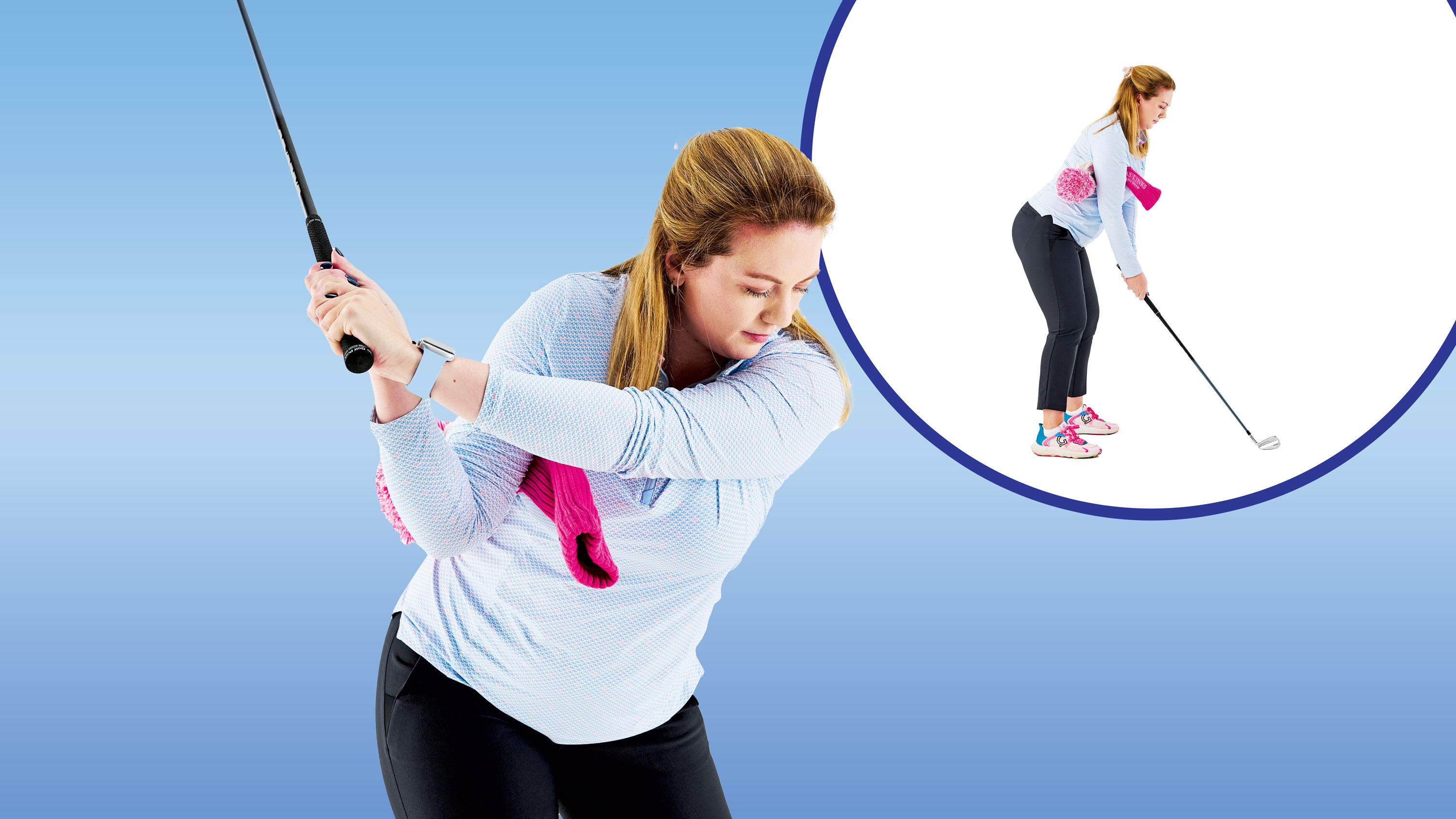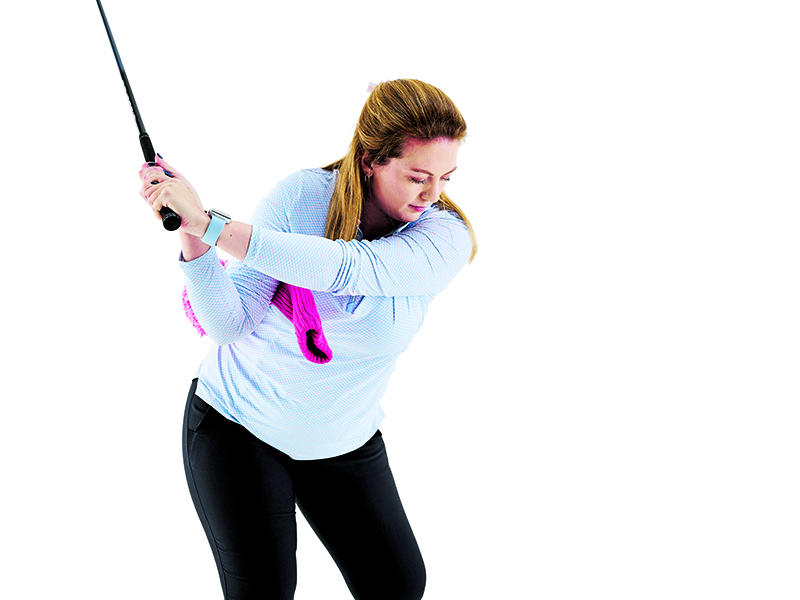
If you asked most amateur golfers what they would like to achieve from a golf lesson, many would come back and say they want to learn how to stop slicing the ball.
If you regularly slice the golf ball, the problem may be arising from a lack of connection through the swing, but fortunately for you... there is a simple fix.
In this article, Top 50 Coach Jo Taylor explains a very effective drill to cure your slice, which could be the key to shooting lower scores and playing better golf.
A Drill To Fix Your Slice
1. Stay Connected
One of the reasons club golfers struggle to strike their irons purely is that they don’t stay connected – the arms don’t work properly with the body (as highlighted by the headcover under my arm falling out).
Note how steep the plane is; I’ve just lifted my arms and there’s very little shoulder turn. I often see golfers get into this position, then they try to shallow the plane out by tilting out of the shot. To then expect a ball striking masterclass is a little farfetched.

2. Swing Connection Drill
Sometimes it’s the idea that you have to hit down with your irons that leads to this disconnection, although it can also be a lack of mobility. You can improve mobility through the best golf exercises, but there is also another way.
Try this drill if you typically slice a lot of your iron shots. Any disconnection between the arms and the body can lead to your swing chopping across the ball.
It’s one I use from time to time just to make sure everything is in sync – and I’ve seen a bunch of tour pros doing it, too.
Pop a headcover or glove just below your armpit on your trail side. Forgot about hitting balls for now – this is all about developing better positions.

This drill should keep your upper arms more connected to the rib cage. Make a swing with a headcover under your right arm and get used to the feeling of your trail arm’s elbow pointing more towards the ground.
If you lift your arms up and away from the body as you swing back, the headcover will drop to the ground and you’ll know you’ve become disconnected. It should only hit the ground post-impact into the follow-through.







